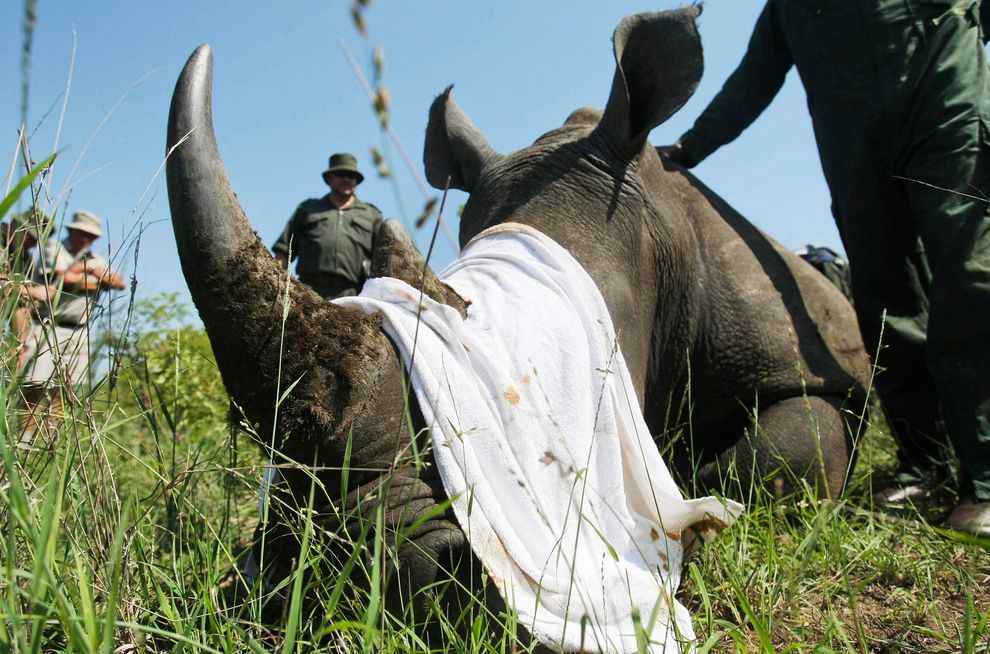South Africa Sees Record Year for Rhino Poaching

More than 1,200 rhinos were illegally killed in 2014 in the country.
South Africa, home to the overwhelming majority of the world’s wild rhinos, saw more of the animals poached last year than ever before, its government announced on Thursday. There were 1,215 rhinos illegally killed in the country in 2014, a 21 percent increase from the 1,004 rhinos killed in 2013, according to South Africa’s Department of Environmental Affairs.
“If poaching is allowed to increase at the rates of the previous few years, it could drive the population to extinction in the next decade or two,” says Matthew Lewis, an African species expert with World Wildlife Fund‘s (WWF) Species Conservation Program.
The killing has been driven by demand for rhino horns in Asia, especially in Vietnam and China, where some people believe the keratin-based horns can cure them of various ailments (that claim is disputed by Western scientists).
The poaching rate for South Africa’s rhinos, about 6 percent of the country’s population each year, is equal to the birth rate there, says Lewis. If it gets worse, the species could decline rapidly toward extinction. (See “Rhino Wars” in National Geographic magazine.)
South Africa is home to an estimated 18,000 white rhinos and 1,700 to 1,800 black rhinos. The country did not specify how many of the rhinos killed last year were white or black, but Lewis says past studies have shown that more than 90 percent of the rhinos killed there were white. The larger white rhinos are more abundant and tend to spend more time out in the open, where they make easier targets for poachers.
About 26,000 rhinos in total live in several other countries in Africa, and they face high poaching pressure across their range. (Learn about the recent controversy over a legal rhino hunt.)
Poaching Hot Spot
Nearly two-thirds of the rhinos killed in South Africa last year were shot by poachers in Kruger National Park, which holds the majority of the country’s rhinos. The park is one of the world’s largest, at 7,523 square miles (19,485 square kilometers), which is bigger than the state of Connecticut. Set in northeastern South Africa, the park shares a porous border with Mozambique, one of the poorest countries in the world.
“Poachers can easily slip across the border into the park and make themselves rich in one night’s time,” says Lewis.
Poaching rates have shot up dramatically since 2007. Before then, only 10 to 15 rhinos were poached in South Africa a year.
The surge has been driven by high prices for rhino horn on the black market ($30,000 a pound, about the street price of cocaine), in part due to rising wealth in East Asia, says Lewis. Trade in rhino parts is illegal due to international agreements. But many countries have been lax about enforcement.
The increase in the poaching rate of rhinos has leveled off somewhat in the past couple of years.
“Year on year, comparatively speaking, the increase in the rate of poaching has slowed since 2012,” South Africa’s Minister of Environmental Affairs Edna Molewa said in a statement on Thursday. “Nevertheless, the figures remain worryingly high.”
Collected:

